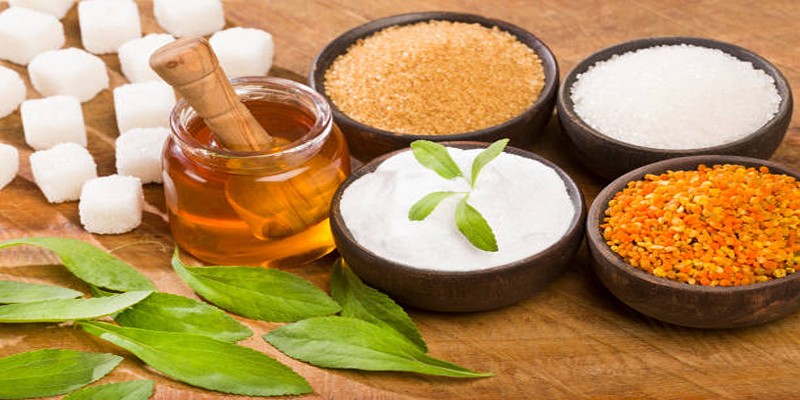Effective Remedies for Temporal Arteritis: Managing Symptoms and Easing Pain
Temporal arteritis—giant cell arteritis—is a disorder affecting the arteries, particularly those around the temples. Often affecting elderly persons, it can cause major health problems, including vision loss, if not adequately addressed. The most often occurring symptoms are severe headaches, scalp sensitivity, and jaw pain, which make daily tasks challenging. If you have these symptoms, you are not alone; you may properly control the illness with the correct therapy and medicines.
This article will discuss the most efficient approaches to easing temporal arteritis-related discomfort and lowering inflammation. Several strategies exist to control symptoms and avoid consequences, from basic lifestyle modifications and natural cures to pharmacological treatments, including corticosteroids. Let's explore some doable ideas that will enable you to take charge of your health and raise your quality of life.
Effective Remedies for Temporal Arteritis
Below are the effective remedies for managing temporal arteritis, including medical treatments, lifestyle changes, and natural solutions.
Medical Treatment: The Foundation of Management
Medical treatment is the most important cure for temporal arteritis. The first-line treatment to lower inflammation is corticosteroids, such as prednisone. They stop more artery damage and enable fast treatment of the symptoms. These medications reduce the hyperactive response of the immune system, therefore reducing inflammation. Once the inflammation is under control, doctors occasionally recommend a reduced corticosteroid dosage. Reducing the dosage is the aim here to stop flare-ups.

Pain Relief: Managing Discomfort
Management of temporal arteritis depends critically on painkillers. Daily tasks can be challenging due to the inflammation causing headaches, jaw discomfort, and scalp tenderness. Mild discomfort might be lessened with over-the-counter painkillers, including acetaminophen or ibuprofen. Your doctor might advise stronger prescription painkillers, though, if the suffering is severe. Some people may also find non-steroidal anti-inflammatory medicines in their pain management regimen. Before using any painkillers—especially long-term—always see your doctor since they might interact with other therapies.
Diet and Nutrition: Reducing Inflammation Naturally
A good diet can influence the management of temporal arteritis symptoms. Some foods naturally have anti-inflammatory qualities that help lower bodily inflammation. Foods heavy in omega-3 fatty acids— walnuts, flaxseeds, salmon—help particularly with heart and vascular health. Additionally, providing antioxidants to fight inflammation is a diet heavy in fruits and vegetables. Also important for general health are foods high in vitamin D and calcium, such as leafy greens and fortified dairy products. Avoiding processed foods heavy in trans fats and carbohydrates is vital since they aggravate inflammation.
Exercise: Maintaining Blood Flow and Reducing Inflammation
Regular physical exercise can help lower bodily inflammation and preserve excellent circulation. Although it could be tempting to always relax when you have symptoms, modest activity can help. Walking, swimming, or moderate stretching might help keep circulation and flexibility intact, perhaps relieving headaches or pain. Before beginning any fitness program, particularly if your symptoms are severe or you take medication, discuss it with your doctor. Mild workouts help you relax and boost your general wellness.
Hot and Cold Compresses: Easing Pain and Swelling
Using hot and cold compresses will help with temporal arteritis-induced pain. Cold compresses provide brief relief from pain and swelling by helping to numb uncomfortable areas, like the scalp or temples. Conversely, warm compresses can help the afflicted areas get more blood flow and encourage relaxation, lowering stiffness. For optimal efficacy, alternate hot and cold compresses; follow your doctor's advice on temperature and time.

Rest and Stress Management: Reducing Flare-Ups
Temporal arteritis symptoms can be exacerbated, and inflammation can be caused by stress. Treatment mostly depends on stress management. Another essential is making sure you receive enough sleep and rest. Giving your body the chance to mend is crucial since chronic tiredness can aggravate inflammation and pain. Use meditation or deep breathing exercises as relaxation strategies to lower tension. Maintaining a consistent schedule will also prevent unneeded flare-ups and aggravation of symptoms.
Regular Monitoring and Check-ups
Preventing problems depends on you maintaining awareness of your condition. Frequent visits to your healthcare professional will enable you to track development and modify your treatment plan as required. Blood tests enable your doctor to determine the best course of treatment and evaluate the degree of inflammation in your arteries. If your doctor observes any changes or concerns, they might modify your prescription or recommend other therapies. Frequent monitoring guarantees appropriate illness management, preventing problems, including visual loss.
Herbal Remedies: A Complementary Approach
Some turn to herbal medicines for temporal arteritis to augment their prescribed medical treatment. Two often used herbs with anti-inflammatory effects are ginger and turmeric. Curcumin, which is included in turmeric, has been shown in studies to help lower bodily inflammation. Additionally, ginger can help ease joint stiffness and naturally soothe pain. Before using any herbal treatments, though, you should see your doctor since they might interfere with pharmaceuticals. Although they can be used with conventional treatments, herbal remedies shouldn't take the front stage here.
Lifestyle Changes: Enhancing Overall Health
Lifestyle modifications can improve the course of temporal arteritis. For example, quitting smoking will help your cardiovascular health and lessen the strain on your arteries. Maintaining a good weight can also help lower the risk of other medical problems. Reducing ethanol intake and avoiding too much sodium will help control blood pressure even more and lower inflammation. Ensuring your way of life fits your treatment schedule will enhance your general condition and assist in more efficient disorder management.
Conclusion:
Managing temporal arteritis ultimately calls for a mix of natural solutions to lower inflammation and pain, medicinal treatments, and lifestyle changes. Though other steps like pain control, a good diet, frequent exercise, and stress reduction can greatly increase your quality of life, corticosteroids remain the cornerstone of treatment. Herbal treatments and consistent monitoring enhance your course of therapy even more. Making these adjustments and carefully collaborating with your doctor will help you properly control temporal arteritis and avoid major consequences. Maintaining your health and well-being depends critically on early diagnosis and constant treatment.












